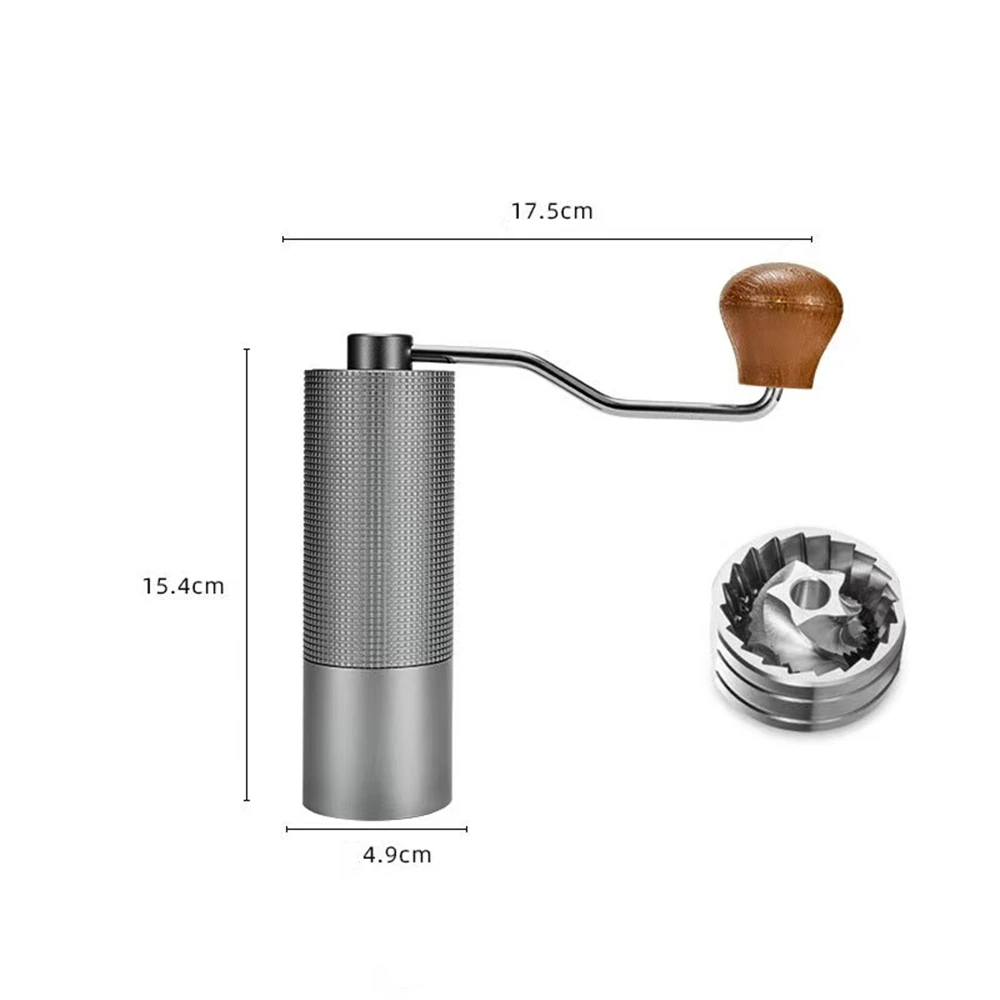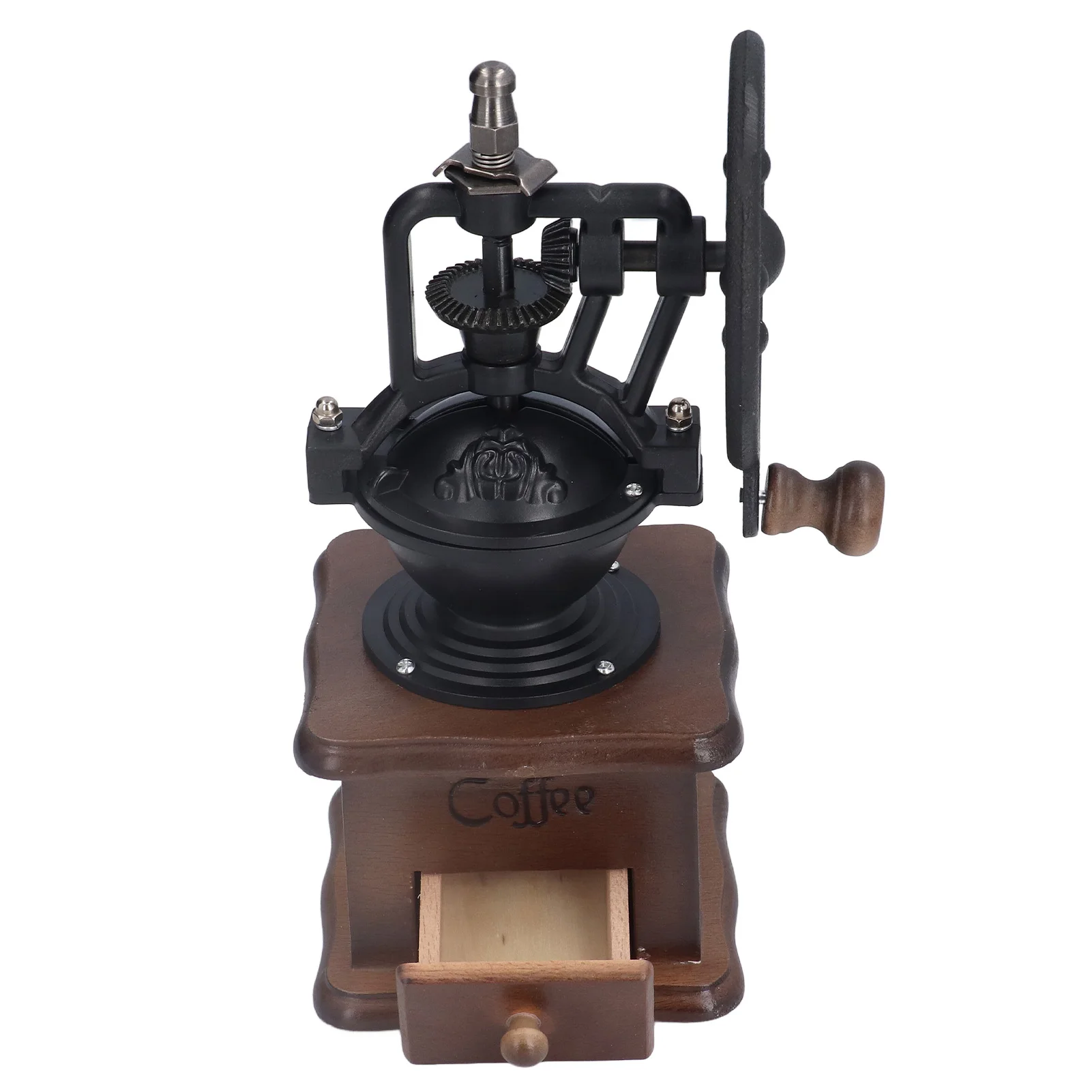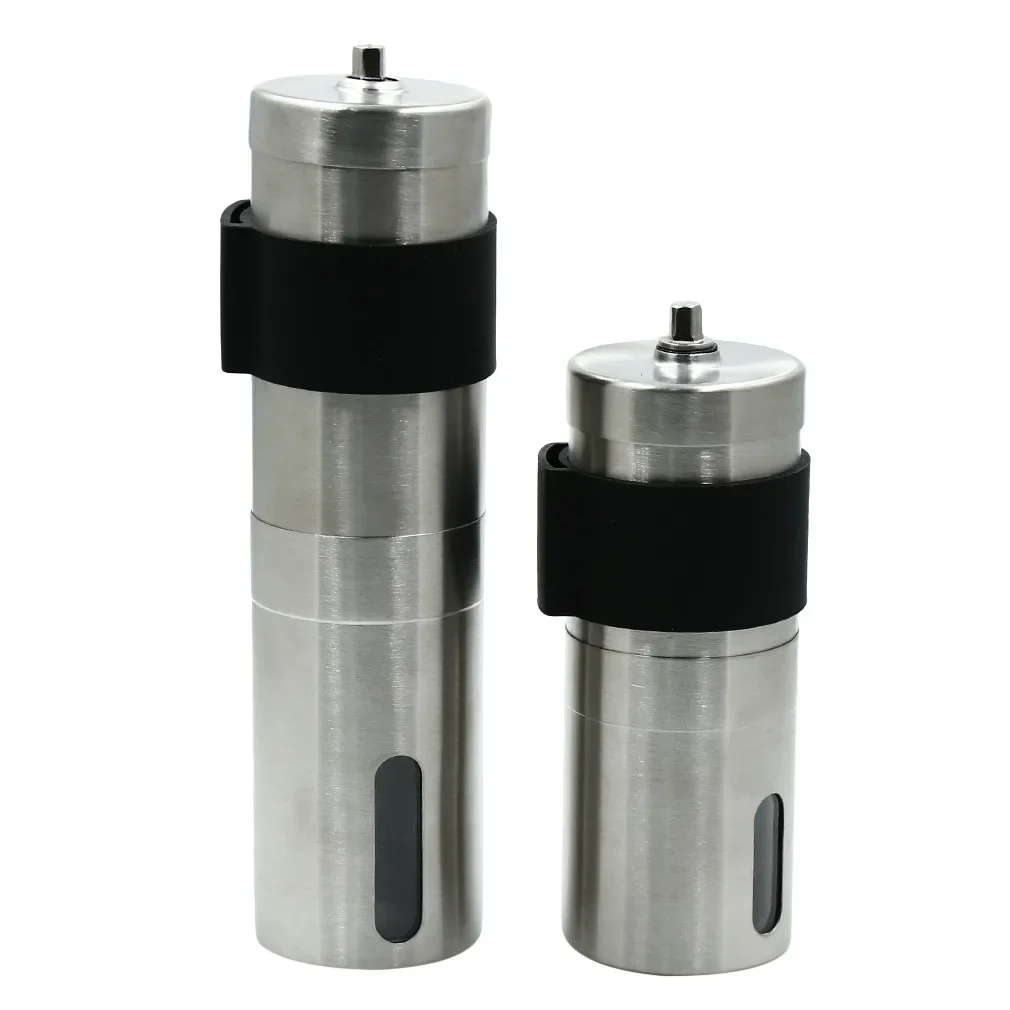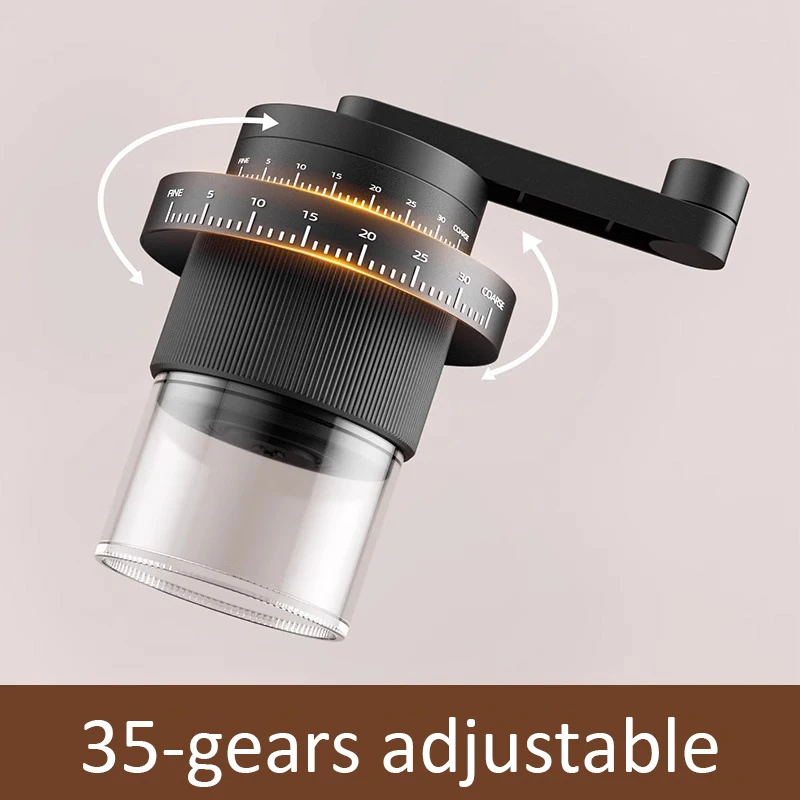Understanding Coffee Grinder Burrs: The Foundation of Exceptional Coffee
The journey to an exceptional cup of coffee begins long before hot water touches your grounds. Among all the steps in coffee preparation, grinding is perhaps the most underestimated yet crucial element that determines whether your morning brew will be extraordinary or merely ordinary.
At the heart of quality coffee grinding lies a fundamental choice: burr grinders versus blade grinders. While blade grinders chop beans randomly into inconsistent particles, burr grinders crush beans between two surfaces (burrs) with remarkable precision. This difference is significant because grinding consistency directly impacts extraction—the process where water pulls flavors from your coffee.
When ground particles are uniform in size, extraction rates typically fall within the ideal 20-22% range, producing balanced flavor. Inconsistent grounds create a problematic mix of under-extraction (sour, weak) and over-extraction (bitter, harsh) simultaneously.
But even among ceramic vs. steel burr coffee grinders, there’s a considerable debate about how burr material affects what ends up in your cup. Coffee enthusiasts passionately discuss the merits of each option, with strong preferences based on taste experience and brewing methods.
The choice between ceramic and steel isn’t merely technical—it’s about understanding how each material can fundamentally alter your coffee’s flavor profile, bringing different characteristics to the forefront while potentially subduing others. A comprehensive ceramic vs. steel burr comparison reveals how these subtle differences can transform your daily coffee ritual.
The Science Behind Burr Materials: Properties That Shape Your Coffee’s Taste
Understanding the physical properties of burr materials provides crucial insight into how they affect your coffee’s final taste. Ceramic burrs, typically made from zirconium oxide or aluminum oxide, possess distinct characteristics that influence grinding performance:
- Hardness: Ceramic ranks 8-9 on the Mohs hardness scale (compared to steel’s 5-6), providing exceptional wear resistance
- Thermal properties: Low thermal conductivity means minimal heat transfer to coffee beans
- Surface texture: Slightly more porous surface compared to steel
- Brittleness: More prone to cracking if foreign objects enter the grinder
Steel burrs, commonly crafted from hardened stainless steel, present a different profile:
- Conductivity: Higher thermal conductivity can potentially transfer more heat during grinding
- Durability: Greater resistance to impact damage and less brittle than ceramic
- Edge retention: Requires more frequent sharpening but less likely to chip
- Surface smoothness: Generally smoother finish that affects how beans interact during grinding
These material differences directly affect how coffee particles are created during grinding. The heat retention properties of steel vs. ceramic burrs play a particularly important role in preserving volatile compounds responsible for aroma and flavor nuances.
When choosing between these options, understanding these physical properties helps explain why certain flavor notes become more prominent depending on the burr material. Our selection of ceramic burr coffee grinders showcases how manufacturers leverage these material properties to enhance specific brewing experiences.
Ceramic Burrs: Flavor Profile & Performance Characteristics
Ceramic burrs create a distinctly different coffee experience through their unique interaction with coffee beans. The grinding action of ceramic tends to be slightly more aggressive, with a sharper cutting action that shears beans with minimal compression.
Due to ceramic’s poor heat conductivity, these burrs transfer very little thermal energy to beans during grinding. This thermal stability helps preserve volatile aromatic compounds that would otherwise be prematurely released or altered by heat. The result is a cup that many describe as having:
- Heightened brightness and pronounced acidity
- Greater clarity and definition between flavor notes
- Enhanced floral and fruit characteristics
- Preservation of delicate, nuanced flavors
- Clean, transparent mouthfeel
Ceramic burrs particularly excel with light to medium roasts where the inherent complexity and subtle flavor compounds benefit from ceramic’s gentle thermal footprint. Single-origin coffees with distinctive terroir characteristics often shine when ground with quality ceramic burrs.
The particle distribution from ceramic burrs tends toward more uniformity with fewer “fines” (micro-particles smaller than the target grind size), which contributes to the clean, bright cup profile many enthusiasts seek. This makes our collection of manual coffee burr grinders particularly suitable for brewing methods that highlight clarity and distinction between flavor notes.

Steel Burrs: Flavor Profile & Performance Characteristics
Steel burrs interact with coffee beans differently, creating a distinctive grinding dynamic that significantly impacts flavor development. Steel’s cutting action tends to be slightly more crushing than ceramic, creating a different particle distribution pattern.
The higher thermal conductivity of steel means these burrs can potentially absorb and transfer more heat during grinding, especially during extended sessions. However, quality grinders often mitigate this through design. The typical flavor profile associated with steel burrs includes:
- Enhanced body and fuller mouthfeel
- Rich, rounded flavor experience
- Pronounced chocolate and caramel notes
- Smoother perception of acidity
- Velvety texture in the cup
Steel burrs typically shine with medium to dark roasts where the caramelization and body-forward aspects of the coffee benefit from steel’s grinding characteristics. The slight heat generated can sometimes accentuate sweetness and chocolate notes that many coffee drinkers prefer.
The particle distribution from steel burrs often includes a slightly different range of particle sizes, including some that contribute to body and richness. This makes our stainless steel manual coffee grinders particularly appealing to those who prefer full-bodied brews with pronounced sweetness and chocolate notes.
Many professional baristas select steel burrs for espresso preparation because the resulting particle distribution contributes to proper flow resistance and crema development. The enhanced body and rounded flavor profile can create a more forgiving extraction under pressure.
Side-by-Side Flavor Comparison: What Your Palate Will Notice
When the same coffee is ground with ceramic versus steel burrs, several key differences become apparent in the cup. This side-by-side comparison highlights what your taste buds will likely detect:
| Flavor Attribute | Ceramic Burrs | Steel Burrs |
|---|---|---|
| Acidity | Bright, pronounced, focused (4.5/5) | Softer, rounder, integrated (3/5) |
| Body | Lighter, tea-like (3/5) | Fuller, more substantial (4.5/5) |
| Sweetness | Clean, distinct (4/5) | Rich, caramelized (4.5/5) |
| Clarity | High definition between notes (5/5) | More blended flavor experience (3.5/5) |
| Aromatics | Vibrant, floral preservation (4.5/5) | Deeper, chocolate-forward (4/5) |
In blind tastings, even casual coffee drinkers can often detect these differences, particularly in how the acidity and body present themselves. The same Ethiopian Yirgacheffe might show delicate jasmine and bergamot notes through ceramic burrs, while steel might emphasize the honey sweetness and add a silkier texture.
The grinding mechanism creates these differences through both heat effects on extraction and particle distribution. Ceramic burrs typically generate fewer “fines” (micro-particles), resulting in clearer cup definition, while steel burrs may produce a distribution that enhances body and mouthfeel.
Neither approach is objectively “better”—they simply emphasize different aspects of the coffee’s potential flavor spectrum. Understanding these differences helps match your grinder choice to your personal taste preferences.

Brewing Method Compatibility: Matching Burrs to Your Coffee Style
Different brewing methods extract coffee in unique ways, making certain burr materials more complementary to specific techniques:
Espresso Brewing:
Steel burrs often have an edge for espresso, as their particle distribution creates resistance patterns that develop proper pressure and crema. The body-forward profile typically works well under high-pressure extraction, creating richness and counterbalancing espresso’s inherent intensity. The ultimate guide to burr materials for espresso offers deeper insight into why many espresso enthusiasts prefer steel burrs.
Pour-Over Methods:
Ceramic burrs often excel with pour-over brewing where clarity and bright acidity are prized. The clean particle distribution minimizes silt and allows delicate flavors to shine through in methods like V60 or Chemex brewing. Extraction tends to be more predictable with the uniform grounds ceramic typically produces.
French Press:
Steel burrs often work well for French press brewing, as their grinding characteristics complement the full-immersion method. The slight variance in particle size can enhance body without producing excessive silt that passes through the mesh filter.
Cold Brew:
Ceramic burrs’ consistency shines in cold brew, where even extraction over long periods is crucial. The clean grounds minimize undesirable bitter compounds during the extended brewing time.
Automatic Drip:
Either burr material can excel here, though ceramic might provide more clarity and steel more body. Consider your preference for a cleaner versus fuller cup when choosing.
For those focused primarily on espresso preparation, our manual espresso grinders are specifically designed to maximize flavor potential using appropriate burr materials for pressure brewing.
Fine Adjustment Hand Grinder, Precision Manual Grinder, Travel Coffee Grinder
Price range: $185.11 through $494.63 Select options This product has multiple variants. The options may be chosen on the product pageHand Burr Grinder, Hand Crank Coffee Grinder, Manual Espresso Grinder, Portable Coffee Grinder
Price range: $262.72 through $300.22 Select options This product has multiple variants. The options may be chosen on the product pageManual Burr Mill, Manual Coffee Grinder Stainless Steel, Manual Coffee Mill Grinder, Mechanical Coffee Grinder
Price range: $127.26 through $130.32 Select options This product has multiple variants. The options may be chosen on the product pageHand Burr Grinder, Manual Coffee Grinder Stainless Steel, Precision Manual Grinder
Price range: $183.64 through $187.52 Select options This product has multiple variants. The options may be chosen on the product page
Beyond Material: Other Critical Factors Affecting Coffee Flavor
While burr material significantly impacts flavor, several other grinder characteristics play equally important roles in determining your coffee’s taste profile:
Burr geometry: The choice between flat vs. conical burr manual grinders often has as much impact as material selection. Conical burrs typically generate less heat and create different particle distribution patterns compared to flat burrs.
Alignment precision: Even the finest burrs cannot perform optimally if improperly aligned. Precision alignment ensures uniform distance between burrs across the entire grinding surface, creating consistent particle size.
Rotation speed: Faster grinding generates more heat regardless of burr material. Quality manual grinders benefit from controlled, slower grinding that preserves flavor compounds.
Grind settings: The ability to make micro-adjustments to grind size significantly affects extraction quality, sometimes overshadowing burr material differences.
Burr size: Larger burrs generally provide more consistent grinding with less heat generation due to increased surface area and potentially reduced grinding time.
Considering these variables explains why the “ceramic versus steel” debate isn’t straightforward—each factor interacts with burr material to produce the final result. Two different grinders with the same burr material might produce notably different results based on these additional factors that affect grind consistency.
Professional baristas often focus more on overall grinder quality and precision than solely on burr material, recognizing that excellent coffee can be produced with either material when other factors are optimized.
Making Your Choice: Which Burr Material Is Right For Your Coffee Journey
Selecting between ceramic and steel burrs ultimately comes down to matching the grinder to your personal preferences and brewing habits:
For brightness and clarity enthusiasts:
Ceramic burrs tend to excel if you primarily enjoy light roasts and brewing methods that showcase acidity and distinct flavor notes. If you describe your ideal cup as “vibrant,” “complex,” or “tea-like,” ceramic likely aligns with your preferences.
For body and richness lovers:
Steel burrs often better serve those who prefer medium-dark roasts and fuller-bodied coffee experiences. If “rich,” “smooth,” or “chocolatey” are your preferred coffee descriptors, steel burrs might better deliver your ideal cup.
Brewing method considerations:
If you primarily brew espresso or French press, steel burrs often complement these methods. For pour-over enthusiasts, ceramic’s clarity can be advantageous. Those exploring multiple brewing methods might prioritize versatility.
Practical factors:
While both materials can be excellent, they differ in maintenance needs and durability. The ceramic vs. steel burr longevity guide explains how ceramic burrs generally stay sharp longer but are more vulnerable to damage from foreign objects like small stones. Steel burrs might need more frequent replacement but handle accidents better.
For precision-focused coffee enthusiasts, our collection of precision manual grinders offers options in both materials, designed to maximize consistency regardless of your material preference.
Ultimately, neither material is universally “best”—the right choice depends on aligning burr characteristics with your flavor preferences, brewing methods, and practical considerations.

Common Myths About Burr Materials Debunked
The coffee world contains many misconceptions about burr materials. Let’s address some common myths:
Myth: “Ceramic burrs always produce better flavor”
Reality: Ceramic burrs produce different—not objectively better—flavor profiles. They typically enhance brightness and clarity while steel often emphasizes body and richness.
Myth: “Steel burrs always burn your coffee”
Reality: Quality steel burr grinders, especially manual ones, generate minimal heat. The “burning” concern is largely overstated except in poor-quality electric grinders running at high speeds for extended periods.
Myth: “Ceramic burrs last forever”
Reality: While ceramic is harder and maintains sharpness longer, the grinder burrs’ durability characteristics show they’re more susceptible to damage from hard foreign objects. Their longevity advantage exists but isn’t as dramatic as often claimed.
Myth: “Steel burrs can’t produce consistent espresso grinds”
Reality: Many professional espresso grinders actually use steel burrs. The consistency depends more on overall grinder quality, alignment, and design than simply burr material.
Myth: “One material is universally preferred by professionals”
Reality: Professional baristas are divided on preference, with many high-end cafes using both materials depending on coffee type and desired flavor profile.
Understanding these realities helps cut through marketing claims and focus on what actually matters: matching your grinder to your specific coffee preferences and brewing methods.
Supplemental Content: Advanced Considerations For Coffee Perfectionists
Coffee perfectionists often explore nuances beyond the basic ceramic versus steel question:
Burr seasoning—the process where new burrs become smoother through use—affects both materials differently. Steel burrs typically season more noticeably, with many users reporting flavor improvements after grinding 5-10 pounds of coffee through new steel burrs.
Specialty burr materials like titanium-coated steel combine benefits of both traditional materials—the durability of ceramic with the resilience of steel—though at premium prices that may not justify the marginal improvements for most users.
Water minerality interacts fascinatingly with grounds from different burrs. Higher mineral content water can sometimes accentuate the body-forward characteristics of steel-ground coffee, while softer water might better complement the clarity of ceramic-ground beans.
Different coffee origins show varying levels of sensitivity to burr material. Ethiopian and Kenyan coffees, known for complex acidity, often show more pronounced differences between burr types compared to Brazilian or Sumatran beans.
Frequently Asked Questions About Coffee Burrs and Flavor
Do ceramic burrs really last longer than steel?
Ceramic burrs typically maintain their cutting edge 2-4 times longer than steel under normal use, but are more vulnerable to catastrophic damage if foreign objects enter the grinder.
Which burr material is better for light versus dark roasts?
Ceramic burrs often complement light roasts by highlighting their acidity and complex flavors, while steel burrs frequently enhance the body and sweetness in darker roasts—though excellent results are possible with either combination.
Can the average coffee drinker taste the difference?
Yes, most people can detect differences, particularly in acidity and body, though preferences vary widely and neither option is universally preferred.
Are there maintenance differences between materials?
Steel burrs require more frequent cleaning to prevent oil buildup but are less vulnerable to damage. Ceramic burrs need more careful handling but generally require less frequent maintenance.
Which produces more “fines” during grinding?
Steel burrs typically produce slightly more fines, which contributes to their body-forward profile, while ceramic burrs generally create more uniform particle distribution.







